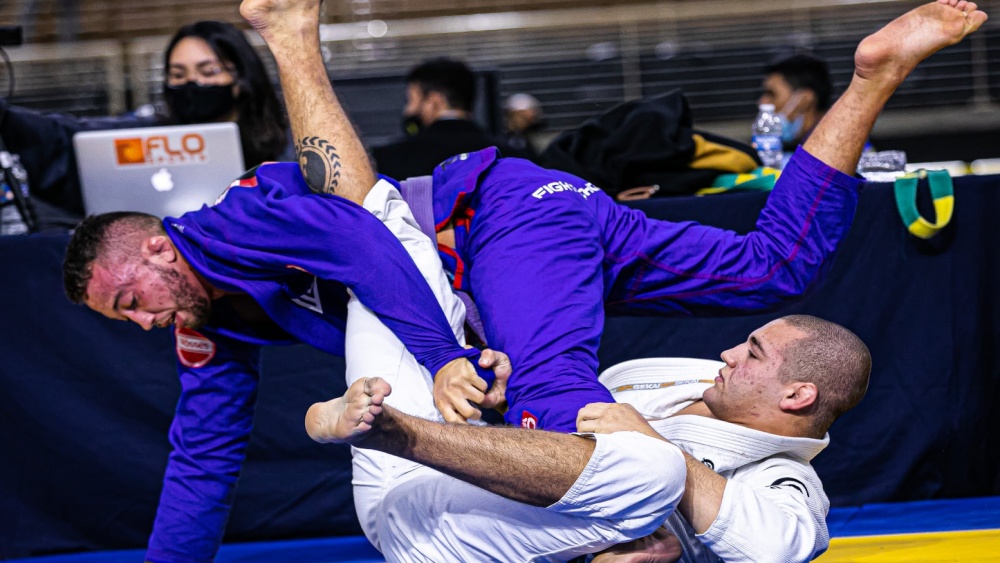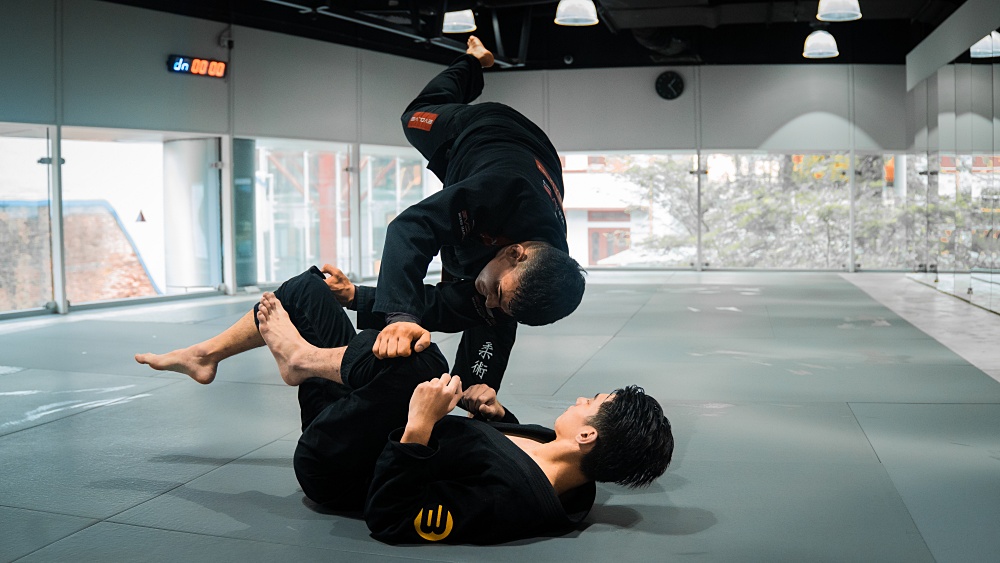The omoplata is one of the essential submissions of BJJ. Like the kimura, the omoplata can be used as a submission, as well as a means to force opponents to move out of position. While the omoplata is a fundamental technique, finishing an experienced opponent using it can be challenging. Luckily, it can be used as a submission in disguise to sweep the opponent and get into a dominant position like side control or the mount. In this article, we will talk about how to perform the omoplata sweep in BJJ.
The Omoplata In BJJ
In Jiu-Jitsu, the omoplata is a powerful submission when done correctly. Though often underutilised, as mentioned above, it can be used to submit and sweep the opponent or as an entry to transition to other submissions like the triangle and armbar. This submission is powerful because it uses the two critical principles on how to dominate a stronger opponent: creating a mismatch where you use your legs to attack their upper body and subduing the opponent by putting their arm behind their back.
To effectively pull off this technique, you must be familiar with its small details and properly position your body weight to apply proper pressure. Its mechanic of using the leverage to pressure the shoulder joint is why opponents are forced to roll out of the threat, opening them up for the armbar after the fact. In the event that you ineffectively applied the omoplata, and the opponent manages to get up a little, you can transition to the sweep and move to the side or full mount.
How To Perform The Omoplata Sweep
Starting from the closed guard, if the opponent has a good strong posture inside your guard, there is a higher chance that they will start controlling your sleeves and stand to pass. Remember to keep your opponents from getting good grips on you during the standup or on the ground, as they can use it to set up and threaten submissions or advance to a more dominant position. Allowing the opponent to control your sleeves as they stand up inside your closed guard will make it easier for them to pass and difficult for you to sweep in return.
Back in the closed guard, when the opponent starts grabbing your right sleeve, rotate your arm under and hold their left sleeve with a two-on-one grip. As they stand up, move your right shoulder towards the opponent’s left leg while maintaining the grips and your guard. Bring their left arm close to their left leg as you rotate your right wrist under the opponent’s leg to break the grip. Now that your right arm is underneath the opponent’s leg, pass the grip from your left to right hand.
Pendulum your outside leg (left leg) wide and use it to rotate your body under, and bring the opponent down as you kick your legs to the floor. Once you land, maintain control over the opponent’s sleeve from your arm underneath their left leg and your weight from your legs over their shoulder. This landing position will make it difficult for the opponent to posture up. Roll your whole body to the far side (left) using the momentum from your left elbow to finish the sweep and land on top. Pass the grip from your right to your left hand to solidify the position.
Now that you’re on the solid top side omoplata position, you can post your right hand on the far side and establish side control. Alternatively, you can post your right hand on the same side (near side) and backstep your left leg over the opponent to land on full mount. You can also re-roll over the opponent’s inside shoulder and kick your leg down to finish with the omoplata.
Finishing Options From The Omoplata
Another way to do the omoplata sweep is if the opponent retains the kneeling position with good posture and you can’t finish them with the submission inside the closed guard. To get to the omoplata from closed guard, you can attempt to attack with an armbar, and when the opponent pushes their hands to your chest and pulls their arm out, you can move to the side and transition to the omoplata. Now that you’re in the omoplata, you want to force the opponent to touch their shoulder on the mat so you can sit up and control their far hip, making it hard for them to escape.
Although often, the opponent has a solid posture making it difficult for you to sit up and reach for their hip. Assuming you have the omoplata on the left and the opponent posts their right hand on the mat, you can always transition to the triangle. If the opponent is posturing high up with their right foot on the mat, making reaching the triangle hard, you can use the momentum to do a backward roll. To do this, attempt to drive the opponent’s shoulder down the mat, and as they posture up, do a backward roll while maintaining an ankle grip on their left leg to land on top.
Once on top, transition your grip from the left ankle and post your right hand to the far side of the mat to block the opponent’s right hip. This will prevent the opponent from doing a hip escape while trying to clear their left arm. Ideally, as you land, you want to have your calf between the opponent’s left elbow and shoulder. Having the left elbow trapped while posting your right hand on the far side of the mat, you can attack the opponent’s left arm with the armbar by simply pushing their hand on the mat. You can also attack with the wristlock as an alternative.
You shouldn’t use both hands for the armbar as there will be no contact blocking the opponent’s far hip, allowing them to sit up and escape. If the opponent recognizes that you are attempting the armbar, you can always go back to the omoplata by rolling or backstepping to the opposite side. From the same top omoplata landing position, you can backstep and attack with a triangle or armbar.
Conclusion
As shown by athletes like Nicholas Meregali, the omoplata sweep is a technique that can be used even at the championship level. It is a super effective sweep that can give you many attacking opportunities. Just remember to stay cautious when practicing this technique, as it is powerful enough to cause distress to the shoulder joint.
You may also like:

















